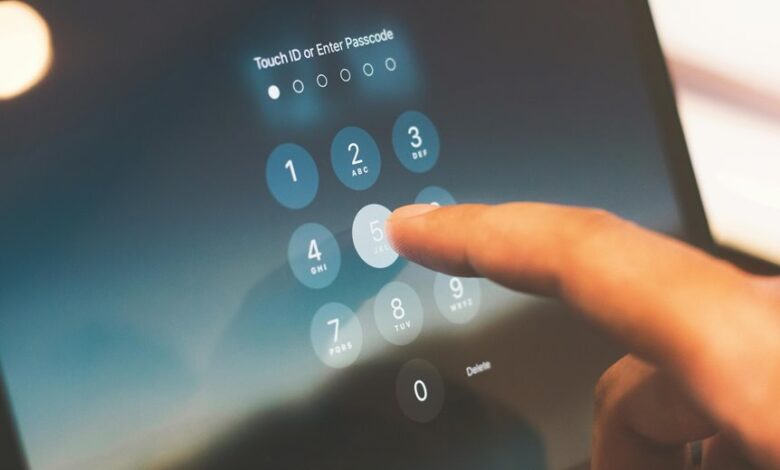Unlocking Digital Opportunities 3501874229

In a rapidly evolving digital landscape, businesses must navigate the complexities of opportunity assessment. Effective strategies that harness data analytics and technological innovations are essential for identifying market gaps. A strong online presence, coupled with compelling brand storytelling, can significantly enhance audience engagement. The interplay of these elements shapes a company’s competitive edge. However, the question remains: what specific approaches can truly unlock the potential of these digital opportunities?
Understanding Digital Opportunities
As the digital landscape continues to evolve, understanding digital opportunities becomes essential for individuals and organizations alike.
Effective opportunity assessment allows for the identification of trends, innovations, and market gaps. By embracing these insights, one can navigate the complexities of a digital world, fostering creativity and freedom.
Ultimately, recognizing and seizing these opportunities is crucial for achieving sustainable growth and competitive advantage.
Key Strategies for Success
To achieve success in the digital landscape, organizations must adopt a multifaceted approach that includes embracing digital transformation, leveraging data analytics, and innovating with technology.
These key strategies not only enhance operational efficiency but also unlock new avenues for growth and competitive advantage.
Embrace Digital Transformation
Embracing digital transformation requires organizations to adopt innovative strategies that align with the rapidly changing technological landscape.
A robust digital mindset fosters creativity and adaptability, while enhancing organizational agility enables firms to respond swiftly to market shifts.
Leverage Data Analytics
Data analytics serves as a cornerstone for organizations seeking to make informed decisions and drive strategic initiatives.
By harnessing data visualization techniques and predictive analytics applications, organizations can unlock insights and optimize performance.
Key strategies include:
- Establishing clear objectives
- Integrating diverse data sources
- Utilizing advanced analytical tools
- Fostering a data-driven culture
These approaches empower organizations to navigate complexities and embrace opportunities in a digital landscape.
Innovate With Technology
Unlocking the potential of technology is vital for organizations aiming to remain competitive in an ever-evolving digital landscape.
Embracing technology adoption allows businesses to navigate digital disruption effectively. By fostering a culture of innovation, organizations can leverage cutting-edge tools to enhance efficiency and create unique solutions.
Ultimately, strategic technological investment empowers companies to thrive, driving sustainable growth in a freedom-driven market.
Tools and Resources for Growth
In the rapidly evolving digital landscape, leveraging essential marketing tools becomes paramount for businesses aiming for growth.
By harnessing analytics, organizations can make informed decisions that align strategies with consumer behavior, while automation streamlines operations for enhanced efficiency.
Ultimately, the right combination of tools and resources not only fosters innovation but also positions companies to seize opportunities in an increasingly competitive environment.
Essential Digital Marketing Tools
The landscape of digital marketing is constantly evolving, and leveraging the right tools is crucial for businesses aiming to thrive in this competitive arena.
Essential digital marketing tools empower organizations to enhance their strategies effectively.
- SEO tools for visibility
- Content management systems for organization
- Social media platforms for engagement
- Email marketing software for outreach
Harnessing these resources fosters growth and drives conversion optimization.
Analytics for Informed Decisions
While many businesses invest in digital marketing strategies, the true differentiator lies in their ability to leverage analytics for informed decision-making.
By employing advanced data visualization techniques, organizations can transform complex data into actionable insights.
Furthermore, predictive analytics applications empower companies to anticipate market trends, enhancing their agility and fostering sustainable growth.
This analytical approach unlocks the potential for greater freedom in strategic decision-making.
Automation for Efficiency Gains
Harnessing analytics not only empowers businesses to make informed decisions but also sets the stage for the integration of automation, which can drive substantial efficiency gains.
By leveraging process optimization and robotic automation, organizations can enhance productivity and reduce costs.
- Streamlined workflows
- Enhanced data accuracy
- Cost-effective resource management
- Increased scalability
Building an Online Presence
Establishing a robust online presence is essential in today’s digital landscape, where visibility often translates to opportunity.
Effective website optimization enhances user experience and searchability, while compelling brand storytelling fosters emotional connections with audiences.
Together, these elements empower individuals and businesses to assert their identity, reach broader markets, and ultimately embrace the freedom to innovate and engage meaningfully in an ever-evolving digital world.
Measuring Your Progress
Measuring progress in the digital realm is not merely a matter of tracking numbers; it involves a comprehensive evaluation of various metrics that collectively inform strategy and growth.
Effective progress tracking requires attention to:
- Engagement rates
- Conversion ratios
- Audience demographics
- Content performance metrics
Future Trends in Digital Innovation
What will the future hold for digital innovation as technology continues to evolve at an unprecedented pace? Future predictions suggest that emerging technologies will foster unprecedented creativity and efficiency. The interplay between AI, blockchain, and IoT will redefine industries, granting individuals more freedom in their digital interactions.
| Emerging Technologies | Future Predictions |
|---|---|
| Artificial Intelligence | Enhanced automation |
| Blockchain | Decentralized systems |
| Internet of Things | Smart connectivity |
| Quantum Computing | Unmatched processing power |
| Augmented Reality | Immersive experiences |
Conclusion
In the ever-shifting sands of the digital landscape, businesses must navigate with foresight and agility. By embracing a tapestry of innovative strategies and data-driven insights, they can illuminate the path to growth and engagement. Like skilled artisans, companies can weave compelling narratives that resonate with diverse audiences, transforming opportunities into tangible success. As they measure their progress and adapt to emerging trends, they will not merely survive but thrive, becoming beacons of resilience in the digital age.




